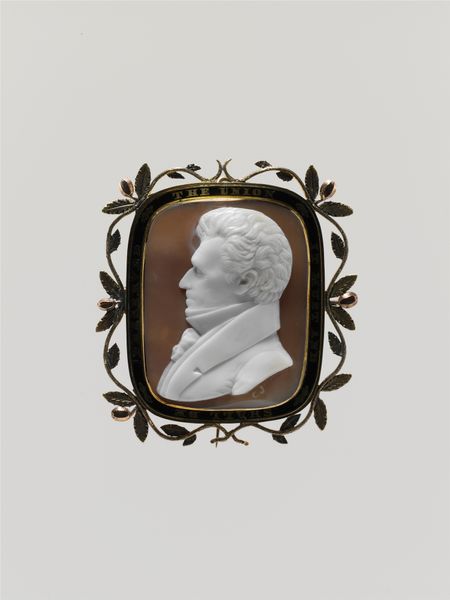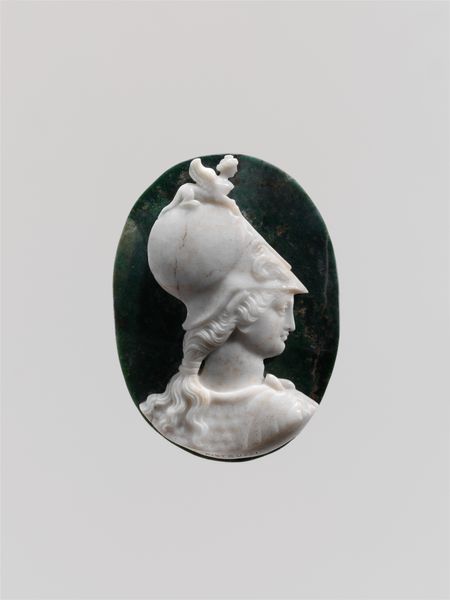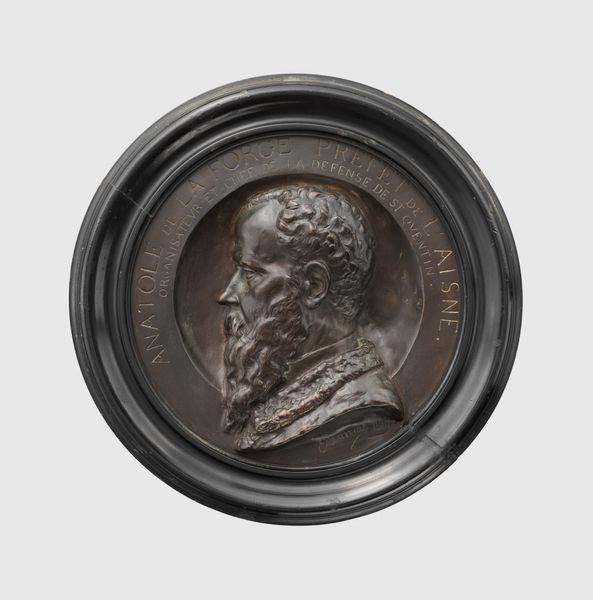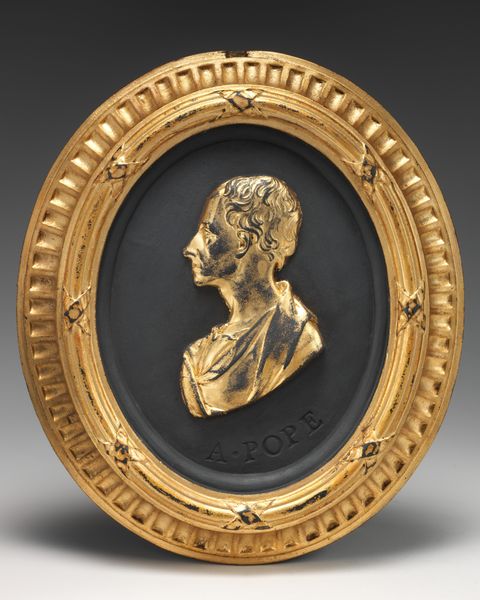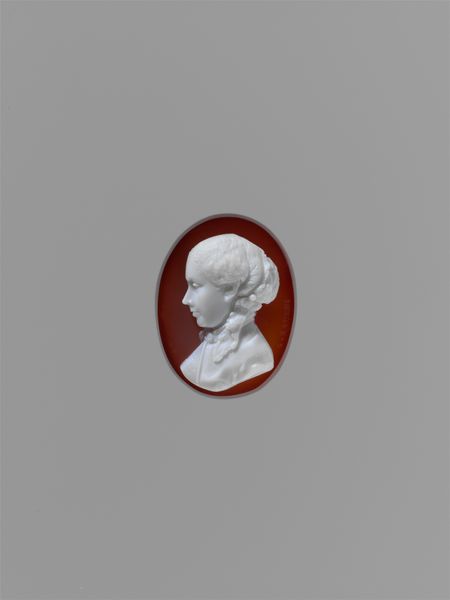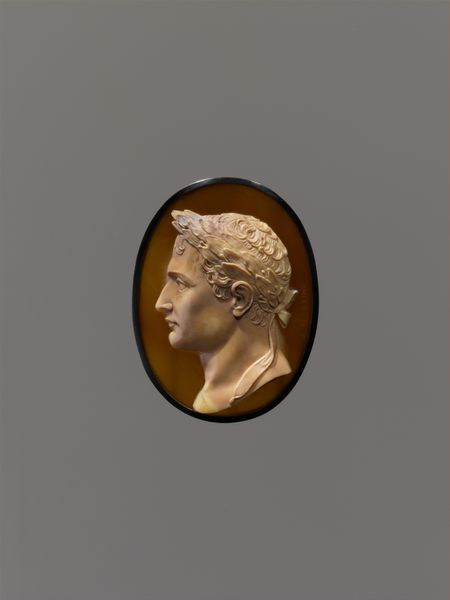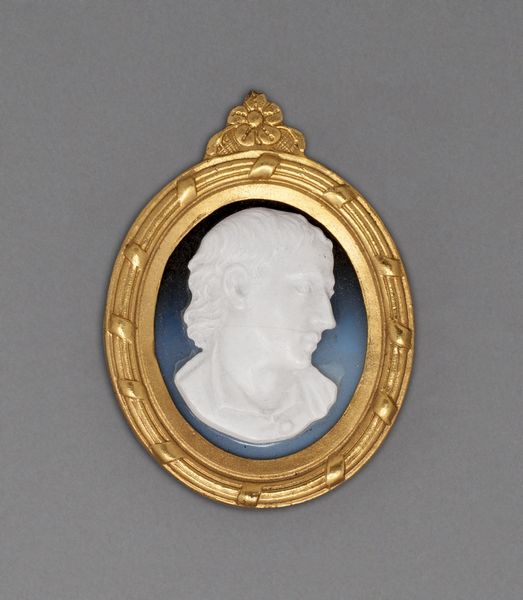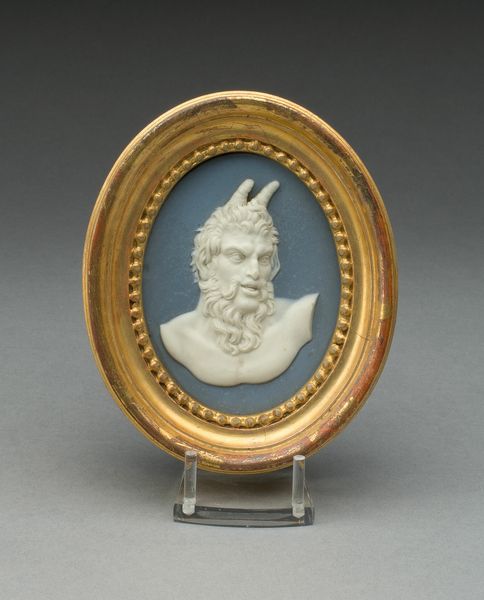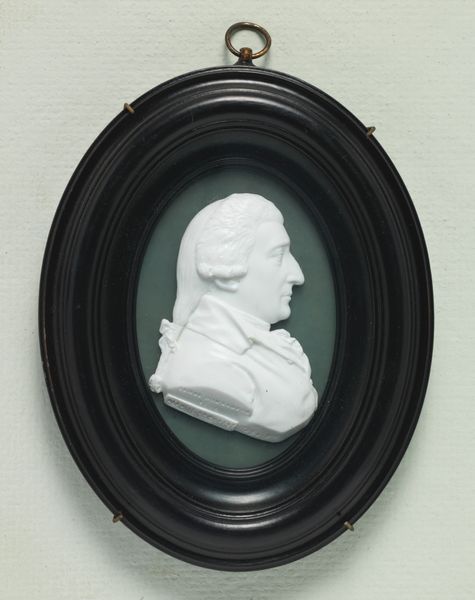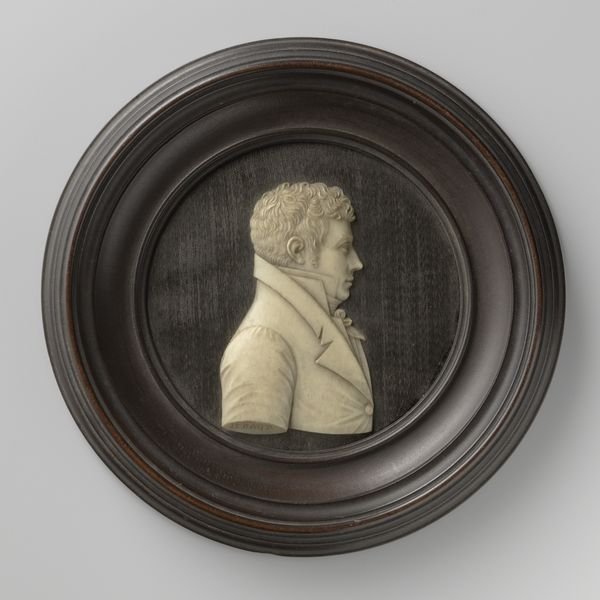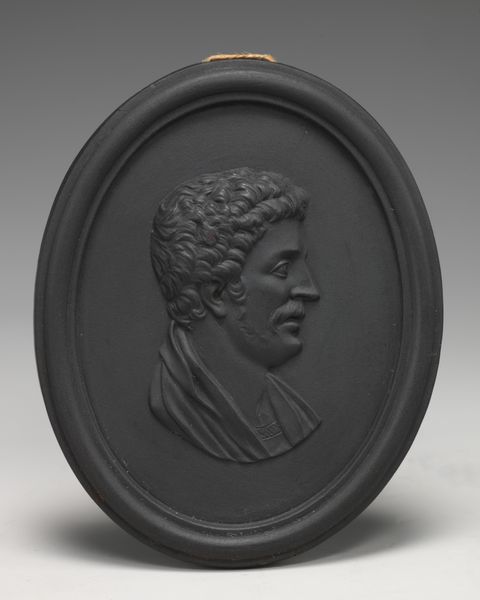
sculpture, marble
#
portrait
#
neoclacissism
#
sculpture
#
sculpture
#
decorative-art
#
marble
#
profile
Dimensions: Visible cameo: 44.6 x 34.2 mm Overall (in setting): 2 5/16 x 1 7/8 in. (5.9 x 4.8 cm)
Copyright: Public Domain
Editor: So, here we have Luigi Saulini's "Bust of a Bearded Man in a Cap," dating from around 1830 to 1865. It’s a marble sculpture and seems surprisingly small. It’s quite striking. What can you tell me about it? Curator: Well, placing it in its historical context is key. The early to mid-19th century saw the rise of a bourgeois public, hungry for images that reflected their own values and aspirations. The portrait bust, once the domain of aristocracy, becomes democratized. Editor: Democratized, how so? Curator: Think about it. Cheaper materials, like this smaller marble carving. Broader subjects than just emperors and nobles. This man is not idealized, his beard is a bit unruly, his cap commonplace. How does this deviation from say, a more neoclassical portrait affect its reception? Editor: It makes it feel more accessible. More…human? Not something untouchable on a pedestal. More for the people and their lives. It doesn't seem purely commemorative or reverential. Is it? Curator: Exactly. Consider how museums were also evolving, shifting from private collections to public institutions during this period. Art increasingly fulfilled a civic function, contributing to collective identity. A portrait like this becomes less about individual glory and more about shared experience and perhaps inspiration to common people. What message was it intended to communicate, displayed perhaps in a middle class home? Editor: I hadn't thought of that at all. Now I see the period had a profound influence. Thank you. Curator: My pleasure. Seeing art as a product and producer of cultural shifts unlocks so many new ways to consider artistic creations.
Comments
No comments
Be the first to comment and join the conversation on the ultimate creative platform.
